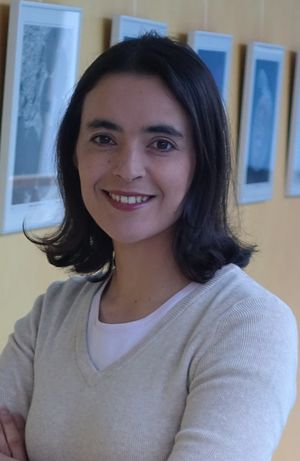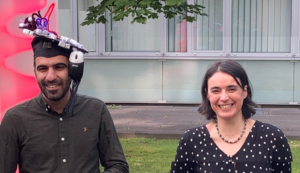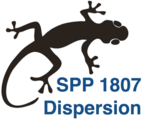Main Page: Difference between revisions
No edit summary |
No edit summary |
||
| Line 43: | Line 43: | ||
== Members == | == Members == | ||
''' | ''' Post-docs''' | ||
* | * [https://scholar.google.com/citations?user=jT0cwvYAAAAJ&hl=en Dr. Hosein Geraili], who just completed his PhD in the group and will continue his project as a post-doc. | ||
Revision as of 15:09, 9 September 2021
The Soft Matter and Interfaces Group
On-going effort to tell you how I (Ana Vila Verde) and my research group spend our time. You'll know I've pulled myself together when there is enough information here to make it useful.
My CV, funding, referee activities can be seen in my ORCID record. My pubIons record is also reasonably informative (my referee activities are incomplete, though); my Scopus record is out-of-date.
Publications: best checked in my Google Scholar profile, which I keep tidy and up-to-date (mostly), or using my ResearcherID (H-7805-2013) in Web of Science.
Postal address University of Duisburg-Essen, Faculty of Physics (AG Wolf), Lotharstr. 1, 47057 Duisburg, Germany
Where I do my thinking: building MC, office 362 (3rd floor), Lotharstr. 1, 47057 Duisburg, Germany
Email: ana.araujo-vila-verde _at_ uni-due.de
News
- Congratulations to Hosein Geraili for defending his PhD Thesis The role of acidic amino acids in the hydration and stabilization of halophilic proteins!
- Congratulations to Hosein Geraili for his article in the Biophysical Journal, clarifying the role of acidic amino acids on the hydration and structural stability of halophilic proteins!
- Congratulations to Ana Bergues for her article in PCCP, where she clarifies the mechanisms governing the deformation of peptide alpha helices pulled in tension!
- Congratulations to João Robalo for his paper in JACS where features of the hydration shell of CF3 groups are shown to be fundamentally different from those around CH3!
Topics
(For now, just a few place holders. Soon I'll write something that conveys how excited I am about what I do - hint: I like doing the work more than I like writing my webpage.)
We use particle-based simulation methods to investigate the structure and dynamics of soft matter and of interfaces, both biological and inorganic. We use mainly classical molecular dynamics or Monte Carlo methods and a variety of levels of description of matter (fixed-charge or polarizable all-atom, coarse-grained), with emphasis on advanced simulation techniques to enhance sampling of phase space thus allowing the calculation of thermodynamic observables such as relative free energies.
- Halophilic proteins: understanding the origin of their surprising functionality at high salt concentrations
- Fluorinated (bio)molecules: how fluorination impacts the structure, dynamics and thermodynamics of hydration, the hydrophobic effect, and protein stability and conformation
- Mechanical response of proteins to applied force
- Hydration of inorganic and organic ions; ion-ion interactions
- Force field development
Members
Post-docs
- Dr. Hosein Geraili, who just completed his PhD in the group and will continue his project as a post-doc.
Former Members
I have been fortunate to work with some wonderful students and post-docs. Here they are:
- Dr. Ana Elisa Bergues-Pupo, currently at the Max Delbrück Center for Molecular Medicine in the Helmholtz Association, Berlin, Germany.
- Dr. João Robalo, currently at the Max Planck Institute for Colloids and Interfaces, Golm, Germany.
- Dr. Sadra Kashefolgheta, currently at the R&D Pharmaceuticals department of Bayer, Wuppertal, Germany.
- Dr. Chuanfu Luo, currently at the State Key Laboratory of Polymer Physics and Chemistry, Changchun Institute of Applied Chemistry, Chinese Academy of Sciences, Changchun 130022, China.
Collaborators
- Dr. Kerstin Blank , Max Planck Institute of Colloids and Interfaces, Golm, Germany.
- Prof. Dr. Dor Ben-Amotz , Dept. Chemistry, Purdue University, USA.
- Prof. Dr. Beate Koksch, Department of Biology, Chemistry, Pharmacy/, Free University of Berlin, Germany.
- Prof. Dr. Petra Imhof, Department of Chemistry and Pharmacy, Friedrich Alexander University Erlangen-Nürnberg, Germany.
- Prof. Dr. Melanie Schnell, Christian-Albrechts-Universität zu Kiel, Germany.
- J. Prof. Dr. Dan Obenchain, Institut für Physikalische Chemie, Georg-August-Universität Göttingen, Germany.
Force field development
Optimized parameters for ions in the AMBER/GAFF force field: AMBER-ready input files here; Gromacs-ready input files here
The Amber/GAFF suite of force fields is widely used by the molecular simulation community. We have recently developed Lennard-Jones parameters (see the SI of [1] and of [2]) that better describe ion-ion and ion-TIP3P water interactions, fully compatible with AMBER/GAFF. We provide improved parameters for the interaction of anions (carboxylates, sulfates, sulfonates, phosphates) with TIP3P water and with important cations (sodium, potassium, ammonium and primary amines). We strongly recommend using these parameters to adequately describe, e.g., salt bridges between acidic amino acids and lysine, and protein solvation at high NaCl and KCl concentrations. Many of the ions are present in buffer solutions typically used experimentally; our parameters enable investigating the impact of buffers on protein structure and dynamics.
Force fields for fluorinated amino acids:
AMBER-ready input files to simulate amino acids with CF3 groups are in the SI of this paper, and for those with CF and CF2 groups are here
DIY: Modifying Lennard-Jones parameters in the Amber force field
Should you ever need to do it yourself, this tutorial explains how to:
- Modify the self-interaction Lennard-Jones parameters of oxygens of carboxylate groups in proteins.
- Modify the Lennard-Jones parameters defining the interaction between sodium ions and the oxygens of carboxylate groups in proteins.
Research affiliations and funding




